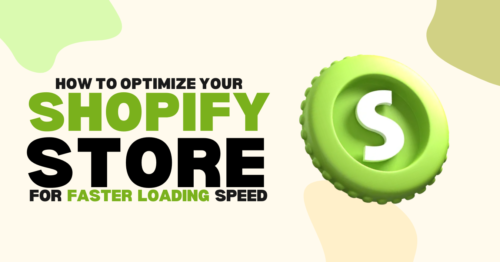Introduction
In the competitive world of e-commerce, having a Shopify store is just the beginning. To drive more sales and visibility, optimizing your store for search engines is crucial. Search Engine Optimization (SEO) helps your store rank higher on Google, bringing in organic traffic that can convert into paying customers. This guide will cover the best SEO strategies for Shopify, from keyword research to technical SEO improvements.
Why SEO is Essential for Shopify Stores
Many store owners rely heavily on paid ads, but SEO offers long-term, sustainable traffic without ongoing costs. A well-optimized Shopify store:
- Increases organic traffic from search engines
- Enhances user experience and navigation
- Builds trust and credibility
- Reduces reliance on paid advertising
Step 1: Conducting Keyword Research
Keywords are the foundation of SEO. To find the best keywords for your Shopify store:
- Use tools like Google Keyword Planner, Ubersuggest, or Ahrefs.
- Identify high-volume, low-competition keywords relevant to your products.
- Focus on long-tail keywords (e.g., “best handmade ceramic mugs” instead of just “mugs”).
- Check competitors’ keywords using SEO tools.
- Optimize product titles, descriptions, and meta tags with researched keywords.
Step 2: Optimizing Product Pages
Each product page should be optimized for SEO to improve ranking and conversions.
Key Elements to Optimize:
- Title Tags: Include primary keywords and make them compelling.
- Meta Descriptions: Write engaging meta descriptions (150-160 characters) to improve click-through rates.
- Image Optimization: Compress images for faster loading times and use alt text with keywords.
- Product Descriptions: Write detailed, keyword-rich descriptions that provide value to the user.
- URLs: Keep them short, clean, and keyword-focused (e.g., yourstore.com/best-handmade-ceramic-mugs).
Step 3: Improving Site Speed and Performance
A slow-loading website can negatively impact SEO and user experience. To optimize your Shopify store’s speed:
- Use a fast, lightweight Shopify theme.
- Compress and optimize images without compromising quality.
- Minimize the use of unnecessary apps and plugins.
- Enable browser caching and lazy loading.
- Use Shopify’s built-in speed optimization features.
Step 4: Creating High-Quality Content
Content marketing is a powerful tool for Shopify SEO. Blog posts, guides, and FAQs can attract organic traffic and improve rankings.
Best Content Strategies:
- Start a blog and post valuable content related to your niche.
- Create guides and how-to articles (e.g., “How to Choose the Best Ceramic Mug”).
- Answer common customer questions in blog posts.
- Share user-generated content and testimonials.
Step 5: Building High-Quality Backlinks
Backlinks from reputable websites increase your store’s authority and ranking.
Effective Link-Building Strategies:
- Reach out to bloggers and influencers for product reviews.
- Get featured on industry-specific directories and listings.
- Guest post on relevant websites in your niche.
- Partner with complementary brands for cross-promotion.
- Share your content on social media to encourage backlinks.
Step 6: Mobile Optimization
Over 70% of e-commerce traffic comes from mobile devices. A mobile-friendly Shopify store improves SEO rankings and user experience.
How to Optimize for Mobile:
- Use a mobile-responsive Shopify theme.
- Simplify navigation for easy browsing.
- Optimize images and page layouts for mobile viewing.
- Enable accelerated mobile pages (AMP) for faster loading times.
Step 7: Technical SEO Fixes
Technical SEO ensures search engines can crawl and index your Shopify store effectively.
Key Technical SEO Elements:
- Sitemap Submission: Submit your XML sitemap to Google Search Console.
- Fix Broken Links: Use tools like Screaming Frog to find and fix broken links.
- Structured Data Markup: Use schema markup to enhance search engine visibility.
- Canonical Tags: Avoid duplicate content issues by setting canonical tags.
- HTTPS Security: Ensure your site has SSL certification for secure browsing.
Step 8: Local SEO for Shopify Stores
If you have a physical store or serve a specific region, optimizing for local SEO is essential.
Local SEO Strategies:
- Claim and optimize your Google My Business listing.
- Include location-based keywords in titles and descriptions.
- Get local citations from directories like Yelp and Yellow Pages.
- Encourage customer reviews on Google and other platforms.
Step 9: Enhancing User Experience (UX)
Google prioritizes websites that offer a great user experience. Shopify store UX improvements include:
- Simple and intuitive navigation.
- Fast checkout process with multiple payment options.
- Clear call-to-action (CTA) buttons.
- Engaging product images and videos.
Step 10: Tracking SEO Performance
To measure your Shopify store’s SEO success, track key performance indicators (KPIs).
Essential SEO Tools:
- Google Analytics: Monitor traffic and user behavior.
- Google Search Console: Track rankings and fix SEO issues.
- SEMRush & Ahrefs: Analyze backlinks and keyword rankings.
- PageSpeed Insights: Improve site speed and performance.
Benefits
- Increased Organic Traffic: Higher search rankings drive more visitors to your store.
- Better Conversion Rates: Optimized content and UX result in higher sales.
- Cost Savings: Reduced dependency on paid ads for consistent traffic.
- Brand Authority: High-quality backlinks and content establish trust in your niche.
- Competitive Edge: Staying ahead of competitors with updated SEO practices.
Services
Fuerte Developers provides expert SEO services tailored to Shopify stores, including:
- Comprehensive keyword research and optimization.
- Technical SEO improvements and site audits.
- High-quality content creation and blog management.
- Backlink-building and authority enhancement.
- Local SEO and Google My Business optimization.
- Performance tracking and continuous improvements.
Conclusion
SEO is a long-term investment that drives sustainable traffic and sales for your Shopify store. By optimizing your store with the right strategies—keyword research, technical SEO, mobile optimization, and quality content—you can outperform competitors and attract more customers. Start implementing these SEO techniques today and watch your Shopify sales grow!
📍 Address: 405 – The Spire, Nr. Shital Park Bus Stand, 150 Ft. Ring Road, Rajkot, Gujarat 360007
✉ Email: info@fuertedevelopers.com | contact@fuertedevelopers.com
📞 Contact Us: 079904 86477
🌐 Website: https://fuertedevelopers.com







